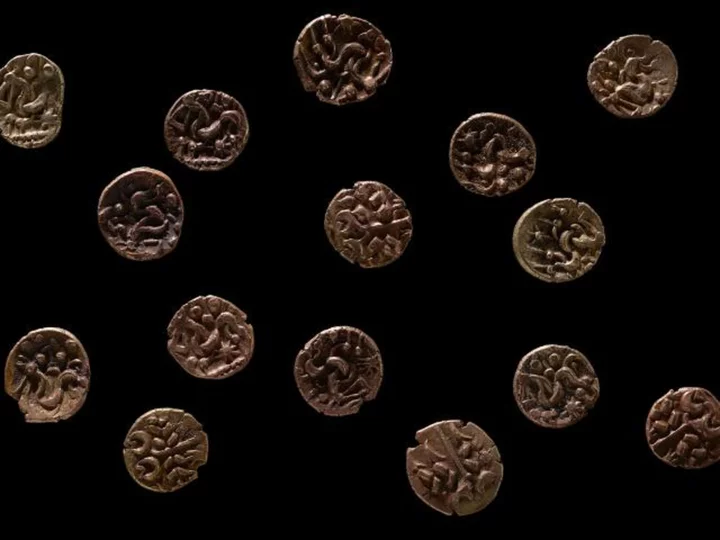Gold coins dating back more than 2,000 years have been found by metal detectorists in Wales, making them the first hoard of Iron Age gold coins to have been discovered in the country.
The 15 coins, which have been declared treasure, are known as staters. They were found the Welsh island of Anglesey, off the northwest coast of the country's mainland.
Struck between 60 BC and 20 BC, the coins belonged to the Corieltavi tribe, who at the time inhabited the geographical area that is now England's East Midlands, according to a National Museum Wales press release.
The precious metals were unearthed by three metal detectorists in a field between July 2021 and March 2022.
Lloyd Roberts, who said he has been a metal detectorist for more than 14 years, found the first coin.
"Finding a gold stater was always number one on my wish list," he said in the release, adding: "That one coin alone would have made my year, but I went on to find another on my next signal."
Roberts said that his friend, Peter Cockton, found the next three. They then contacted the Portable Antiquities Scheme, an organization which records such historical and archaeological finds.
Tim Watson, who said he only began metal detecting following encouragement from his father during lockdown, found the sixth.
"I rushed home to show my wife and we were both in awe of this coin, which was like nothing else I had found, immaculately preserved with such unusual stylised images," Watson said in the release.
Watson said his enthusiasm led him to upgrade his metal detector and he found the remaining nine coins in the following weeks.
'Rich archaeological landscape'
The gold coins' elaborate design derives from those of Philip II, who ruled the ancient kingdom of Macedonia from 359 BC to 336 BC. The heads side of the coins shows the mythological deity Apollo's wreath and hair, while the tails side shows a triangular-headed horse surrounded by symbols.
The coins were likely not used for everyday transactions, except potentially for some high-value purchases, according to the release. Instead, the staters are thought to have been used as gifts between the elites to secure alliances or show loyalty.
Another option is that the Corieltavi tribe used them to form part of an exchange for copper, which there were sources of in various parts of the island.
The staters could also have been used as "offerings to the gods" to fulfill a vow, according to National Museum Wales. Other archaeological finds from Anglesey, as well as Roman sources referring to the island that feature pagan priests, suggest the area was an important religious center at the time.
Gwynedd Archaeological Trust visited the site in September 2021 to see if there were any clues as to why the coins were buried there.
"This hoard is a fantastic example of the rich archaeological landscape that exists in North-West Wales," said Sean Derby, Historic Environment Record archaeologist at Gwynedd Archaeological Trust. "While the immediate vicinity of the find did not yield any clues as to the find's origin, the findspot lies in an area of known prehistoric and early Roman activity and helps increase our understanding of this region."
Welsh museum Oriel Môn is looking to acquire the coins and put them on public display.

